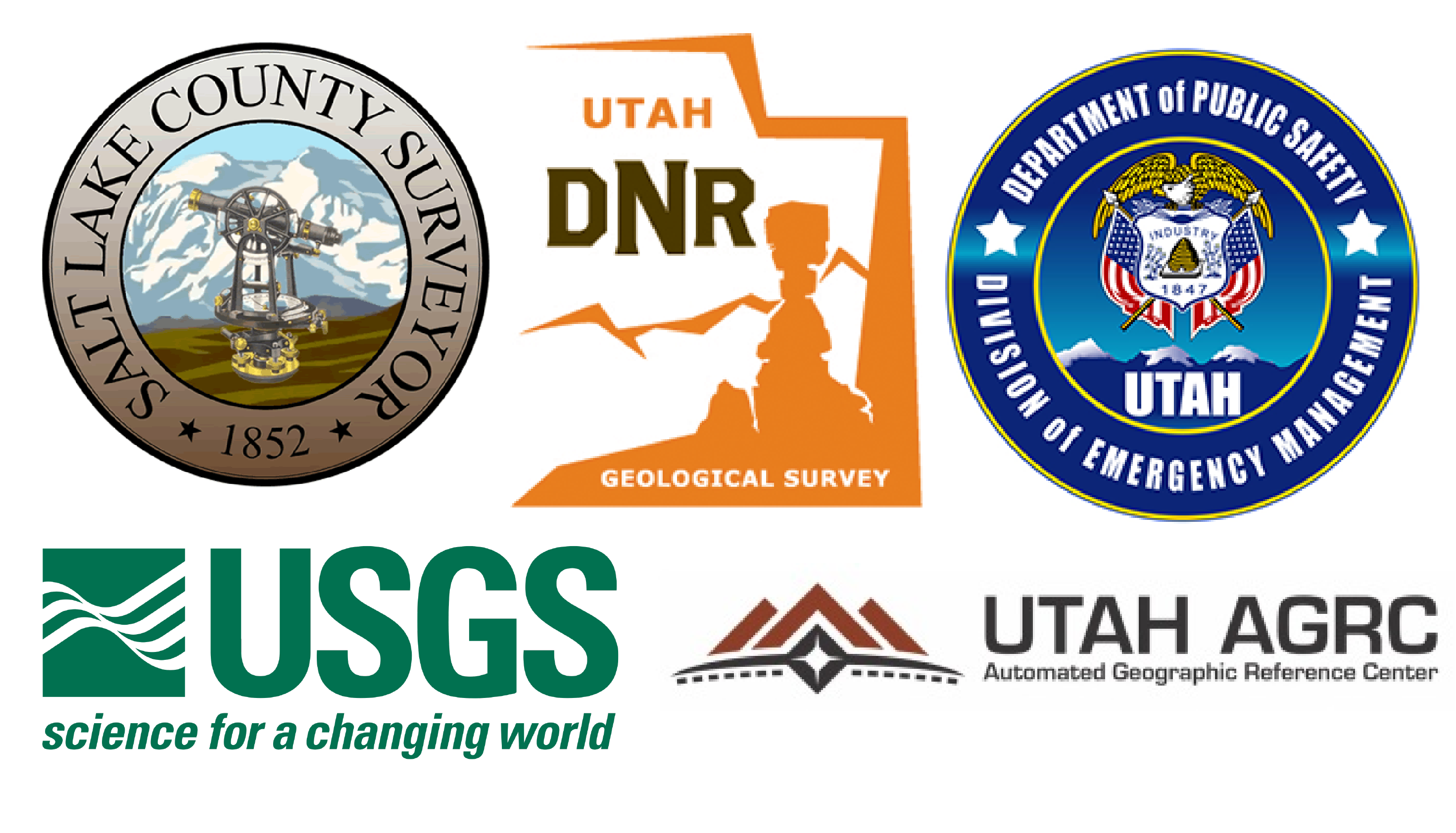State of Utah Acquired LiDAR Data - Wasatch Front
OT Collection ID: OT.122014.26912.1
OT Collection Name: State of Utah Acquired LiDAR Data - Wasatch Front
Short Name: UGS_Wasatch
Collection Platform: Airborne Lidar
| Point Cloud Data | Bulk Download | opentopoID: OTLAS.122014.26912.1 | |
| Raster Data | Bulk Download | opentopoID: OTSDEM.122014.26912.1 |

The State of Utah, including the Utah Automated Geographic Reference Center, Utah Geological Survey, and the Utah Division of Emergency Management, along with local and federal partners, including Salt Lake County and local cities, the Federal Emergency Management Agency, the U.S. Geological Survey, and the U.S. Environmental Protection Agency, have funded and collected over 8380 km2 (3236 mi2) of high-resolution (0.5 or 1 meter) Lidar data across the state since 2011, in support of a diverse set of flood mapping, geologic, transportation, infrastructure, solar energy, and vegetation projects. The datasets include point cloud, first return digital surface model (DSM), and bare-earth digital terrain/elevation model (DEM) data, along with appropriate metadata (XML, project tile indexes, and area completion reports).
This 0.5-meter 2013-2014 Wasatch Front dataset includes most of the Salt Lake and Utah Valleys (Utah), and the Wasatch (Utah and Idaho), and West Valley fault zones (Utah).
Other recently acquired State of Utah data include the 2011 Utah Geological Survey Lidar dataset covering Cedar and Parowan Valleys, the east shore/wetlands of Great Salt Lake, the Hurricane fault zone, the west half of Ogden Valley, North Ogden, and part of the Wasatch Plateau in Utah.
Dataset Acknowledgement: The datasets acquired by the State of Utah and its partners are in the public domain and can be freely distributed with proper credit to the State of Utah and its partners. The datasets are presented as received from our acquisition vendors, and do not necessarily conform to State of Utah and its partners technical, editorial, or policy standards; this should be considered by an individual planning to take action based on the contents of the datasets. The State of Utah and its partners makes no warranty, expressed or implied, regarding its suitability for a particular use and shall not be liable under any circumstances for any direct, indirect, special, incidental, or consequential damages with respect to users of this product.
Dataset Citation: State of Utah Acquired LiDAR Data - Wasatch Front. Distributed by OpenTopography. https://doi.org/10.5069/G9TH8JNQ . Accessed 2026-01-02 Copied to Clipboard
Use License: Not Provided
Dataset Keywords: Utah, Box Elder, Weber, Davis, Salt Lake, Juab, Idaho, Oneida, Wasatch Fault, Wasatch Front, lidar
Survey Date: 10/18/2013 - 05/31/2014
Publication Date: 01/29/2015
Funders Partner Collector
Area: 3,684 km2
Point Density: 11.93 pts/m2
Classifications:
| Class 0 - Never classified | 10,623,101 |
| Class 1 - Unclassified | 24,901,957,735 |
| Class 2 - Ground | 18,318,722,267 |
| Class 6 - Building | 1 |
| Class 7 - Low Point (low noise) | 633,263,484 |
| Class 8 - Model Key/Reserved | 2 |
| Class 9 - Water | 100,227,339 |
| Class 10 - Rail | 3,452,548 |
| Class 31 - Reserved | 1 |
Raster Resolution: 0.5 meter
Coordinate System:
Horizontal: NAD83 (2011) / UTM Zone 12N Meters [EPSG: 26912]
Vertical: NAVD88 (GEOID 12A) [EPSG: 5703]
Units: meter
Survey Report: Reports
LAS Validation Data Report: UGS_Wasatch.html
Dataset Boundary in GeoJSON Format:
Point Cloud: UGS_Wasatch.geojson
Raster: UGS_Wasatch.geojson
Dataset Extent (Bounding Box): North: 42.4336212158107° South: 39.2020137124525° East: -111.537862563527° West: -112.390042972049°
